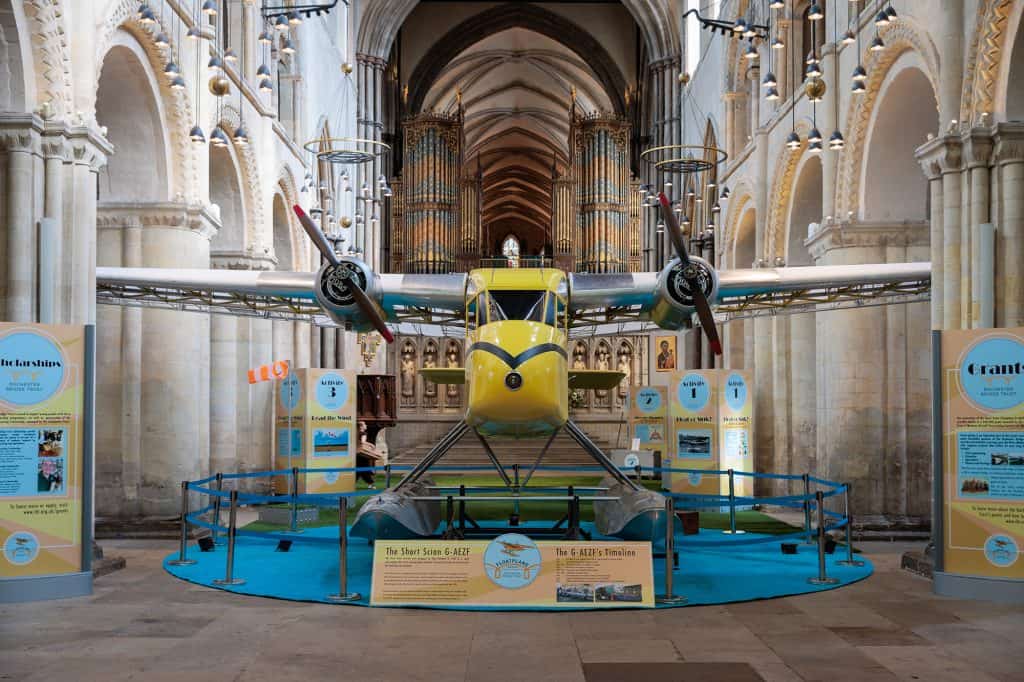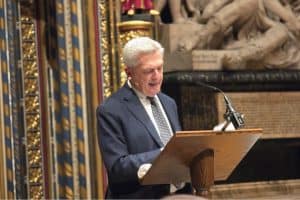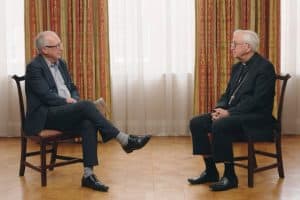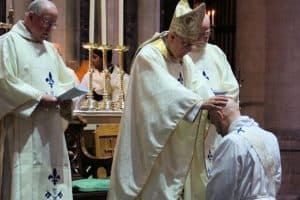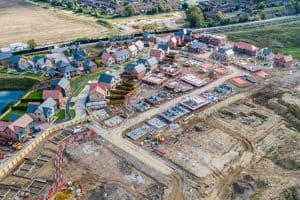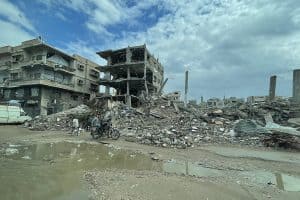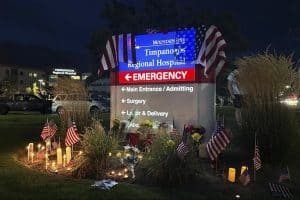By Christine Rayner
Visitors to a Kent cathedral this summer can enjoy flights of fancy and fantasy as they gaze at a restored aircraft resting in the nave.
The bright yellow Short Scion Floatplane was rescued from dilapidation by an aircraft restoration group in the Medway Towns in 2013 and after a complete rebuild costing thousands of pounds is on display in Rochester Cathedral until the end of August.
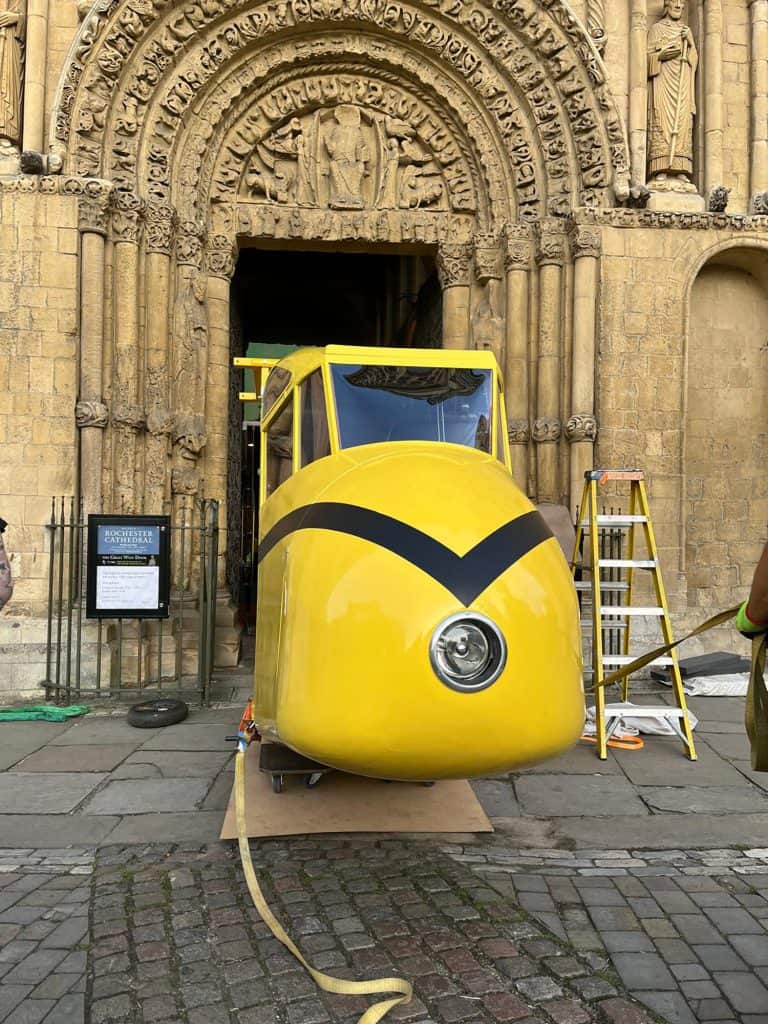
The Scion, built in Rochester in 1937, rests in the nave after a complicated operation that involved nudging its fuselage gently through the intricately carved Great West door, which dates from 1150.
Simon Lace, the cathedral’s chief operating officer, said he first became aware of the Scion restoration programme when he oversaw tourism and heritage at Medway Council. One of his aims when he joined the cathedral management team in 2017 was to increase visitor numbers and boost declining attendance at services.
He was inspired by the 2012 Theos report Spiritual Capital: the Present and Future of English Cathedrals which suggested that sacred spaces could and should be opened for public use.
Mr Lace suggested to the chapter team that it was time to think differently about how to use the cathedral and several ideas were put into practice. These included crazy golf in the nave and several touring art installations, including — in September 2019 — the 27ft Knife Angel statue created by artist Alfie Bradley from 100,000 blades confiscated by police.
Other installations included Museum of the Moon by Luke Jerram, a balloon 23ft in diameter, in February, 2020 and in the spring of 2023 the Peace Doves — a cascade of thousands of paper doves by Peter Walker.
Mr Lace said public reaction to the projects was mixed and “we were slaughtered on social media for about two weeks”, but gradually people began to realise the value of the displays and thousands came to see what was being done.
Not only did visitors arrive to enjoy the displays, many also returned to join services at the cathedral. Worship attendance over Christmas 2019 was up 16 per cent. The moon exhibit attracted 121,000 visitors and although Covid lockdown followed immediately, “it showed there was an interest in looking at the cathedral in a different way”, Mr Lace said.
It took several months to rebuild visitor numbers after the pandemic, but people turned out for a series of light shows and other exhibitions. Mr Lace spoke to visitors about their cathedral experience. “I recall one family telling me, ‘We didn’t think people like us would be allowed in.’ Others told me they had lived in Rochester all their lives yet it was the first time they had been to the cathedral. We are breaking down the barriers so that more and more people can find their way into the sacred space and find something to enjoy.”
Rochester is the second-oldest cathedral in the country, built after Canterbury. It has no admission fee, although donations are welcome. Entry to Canterbury is £17.
The free art and history activities are not just for Christians. “It was noted in the Theos report that even atheists regarded cathedrals as spiritual places. We have met people of all faiths and none,” Mr Lace said.
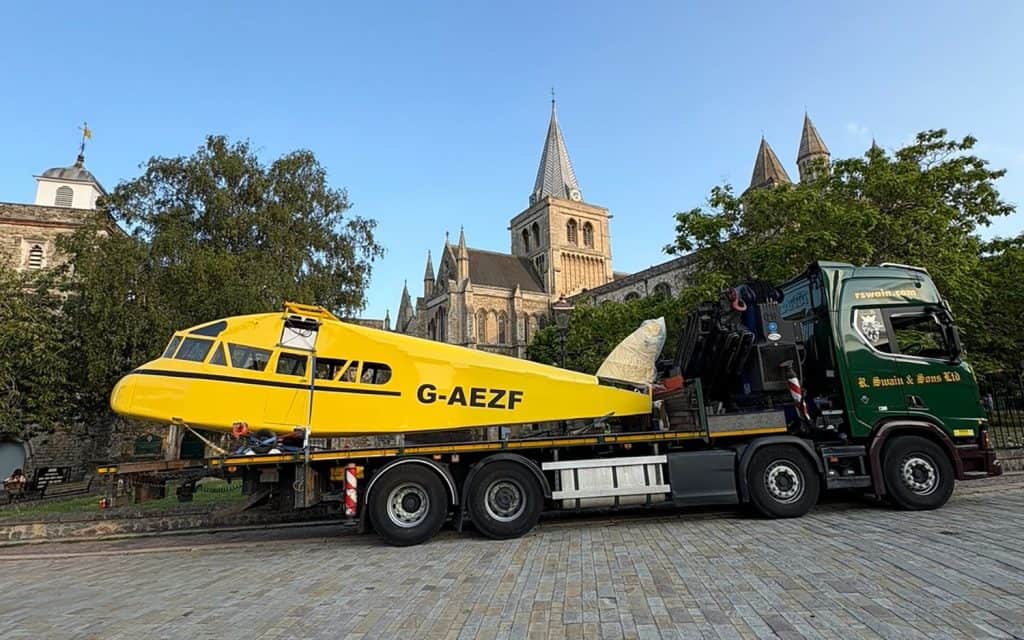
He began negotiations to display the Short floatplane in the cathedral in November 2018. The project to recreate the 1930s aircraft manufactured at the Shorts’ factory on the banks of the Medway at Rochester received a £40,000 grant from the Rochester Bridge Trust and work was carried out by volunteers from the Medway Aircraft Preservation Society.
The trust, founded in 1399, owns and maintains road and service bridges over the Medway at Rochester. Its income derives from endowments in the 14th and 15th centuries and it provides charitable support for the teaching of engineering and agriculture.
Trust representatives will be in the cathedral all summer, welcoming visitors and encouraging visitors to take part in simple engineering experiments. A flight simulator allows aspiring pilots to take the controls of an onscreen game and “fly” a floatplane across a Kent landscape. There’s also a crazy golf course in the precinct gardens, using a series of complicated bridge obstacles.
Mr Lace said there were several messages to emerge from the project. First, an exhibition on the history of Shorts’ aircraft factory in the cathedral crypt highlights the importance of the pre and post-war business, which employed 15,000 people at its height.
Second, the activities offer free entertainment in a safe space for families in the summer holidays. This is of particular importance to people in nearby wards, which are some of the most deprived in the country.
Finally, there’s the hope that some of the visitors will return to see more of the cathedral after the exhibits have moved on. Attendance at Christmas services in 2024 were so high that worshippers had to be turned away.
The display takes up a large amount of space in the cathedral nave and I asked Mr Lace if this would affect services while the floatplane is in residence.
He said: “In the summer break our services have always had a slightly different pattern, because our choristers are on holiday. Morning prayer and communion take place as normal, the former in the east end away from the nave and the latter in the Lady Chapel. Both are finished by the time we open the doors for visitors at 10am.”
And when the cathedral opened to the public the next morning, Mr Lace said, there was a queue outside.
“Evensong takes place as normal in the quire at 5.30pm, after the visitors are gone. The difference is the main service on Sunday mornings which is moved to the quire. We don’t open to visitors until 1pm on Sunday, so worship isn’t disturbed.”


